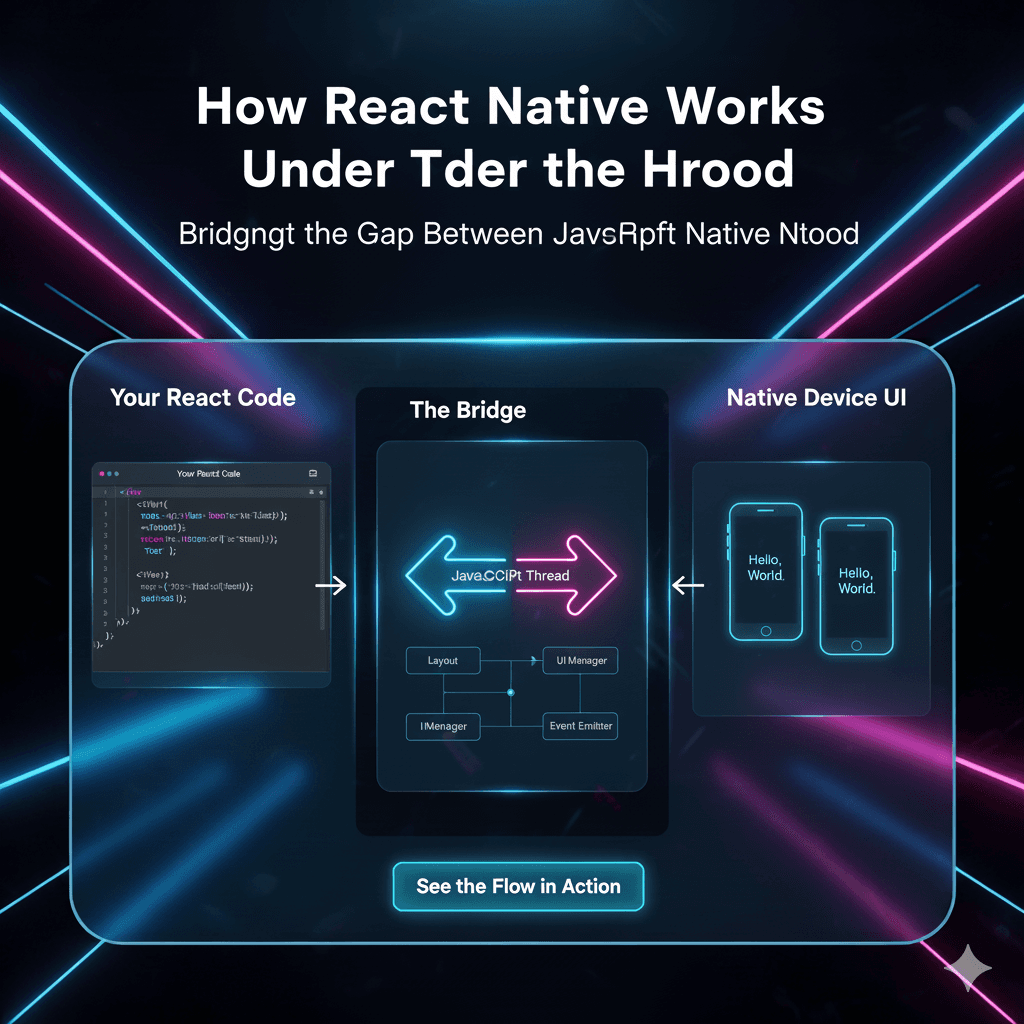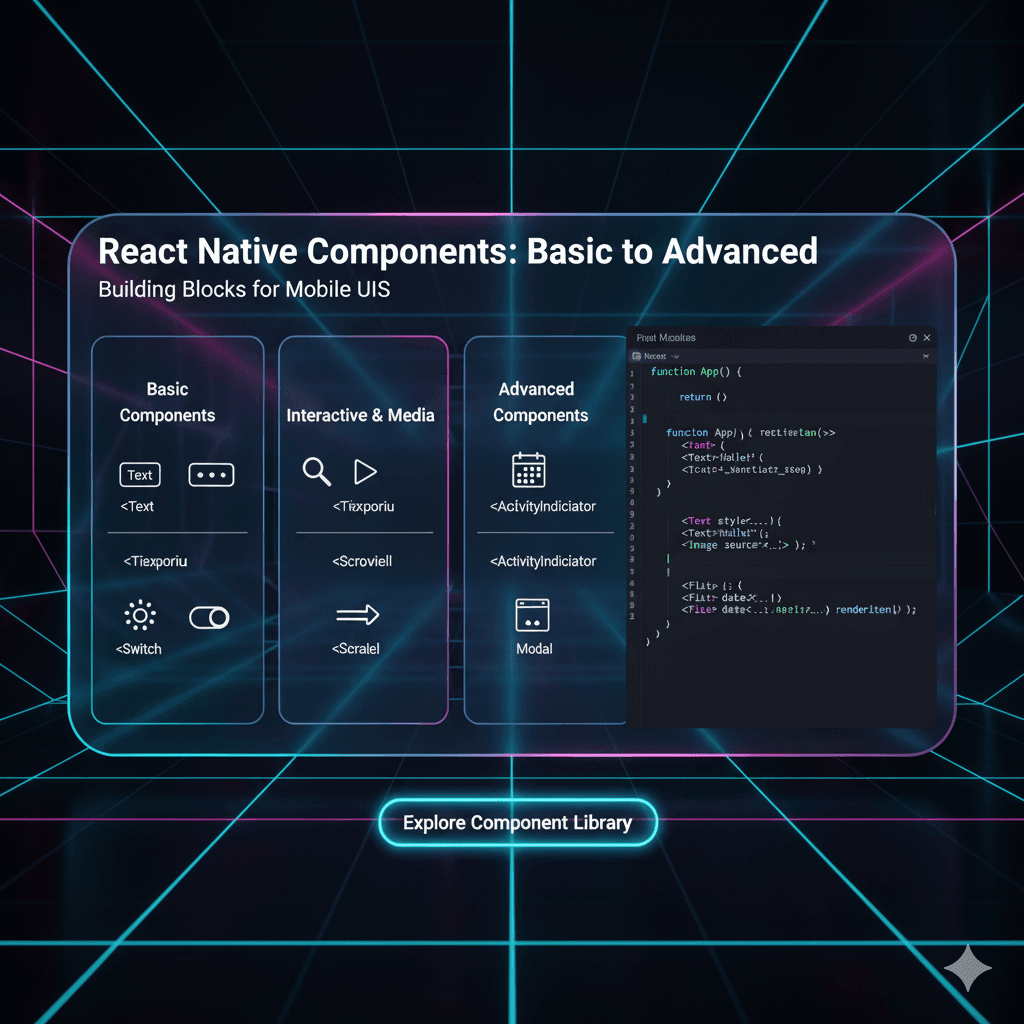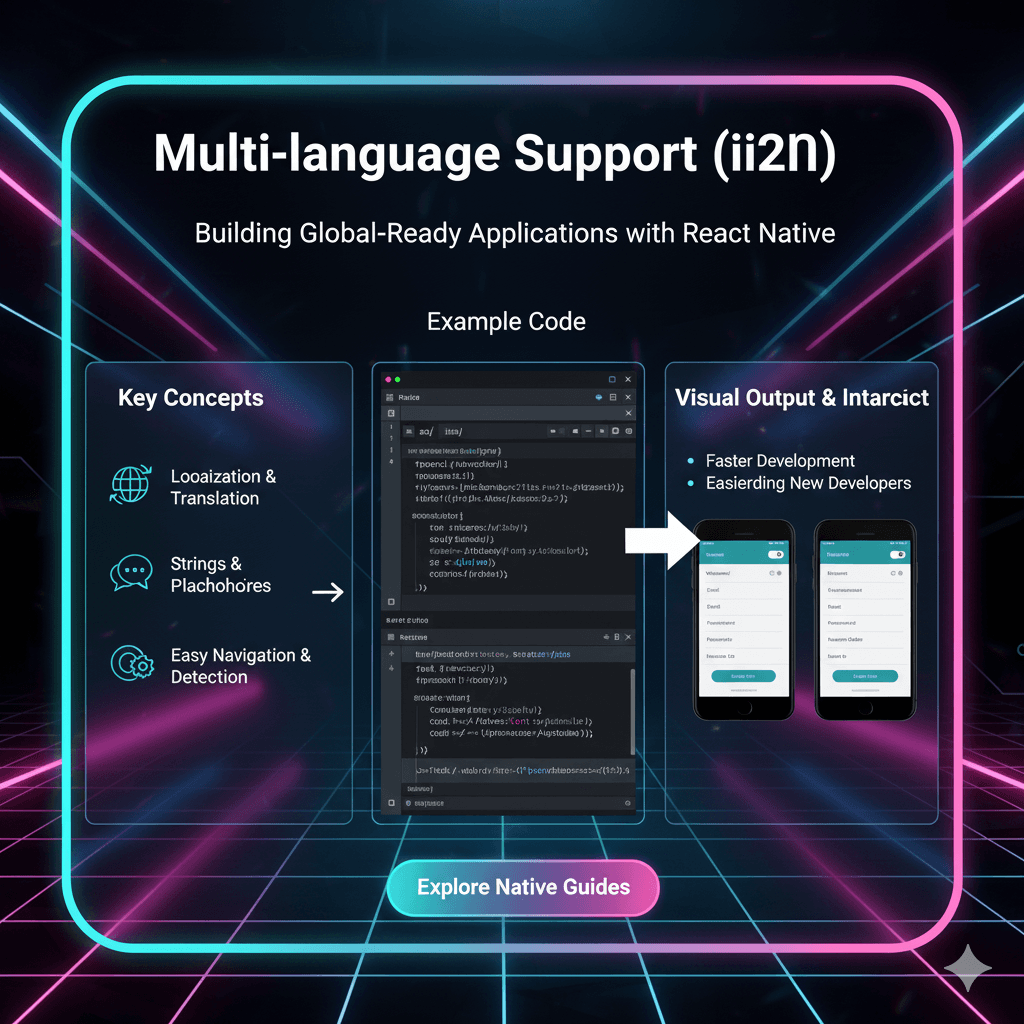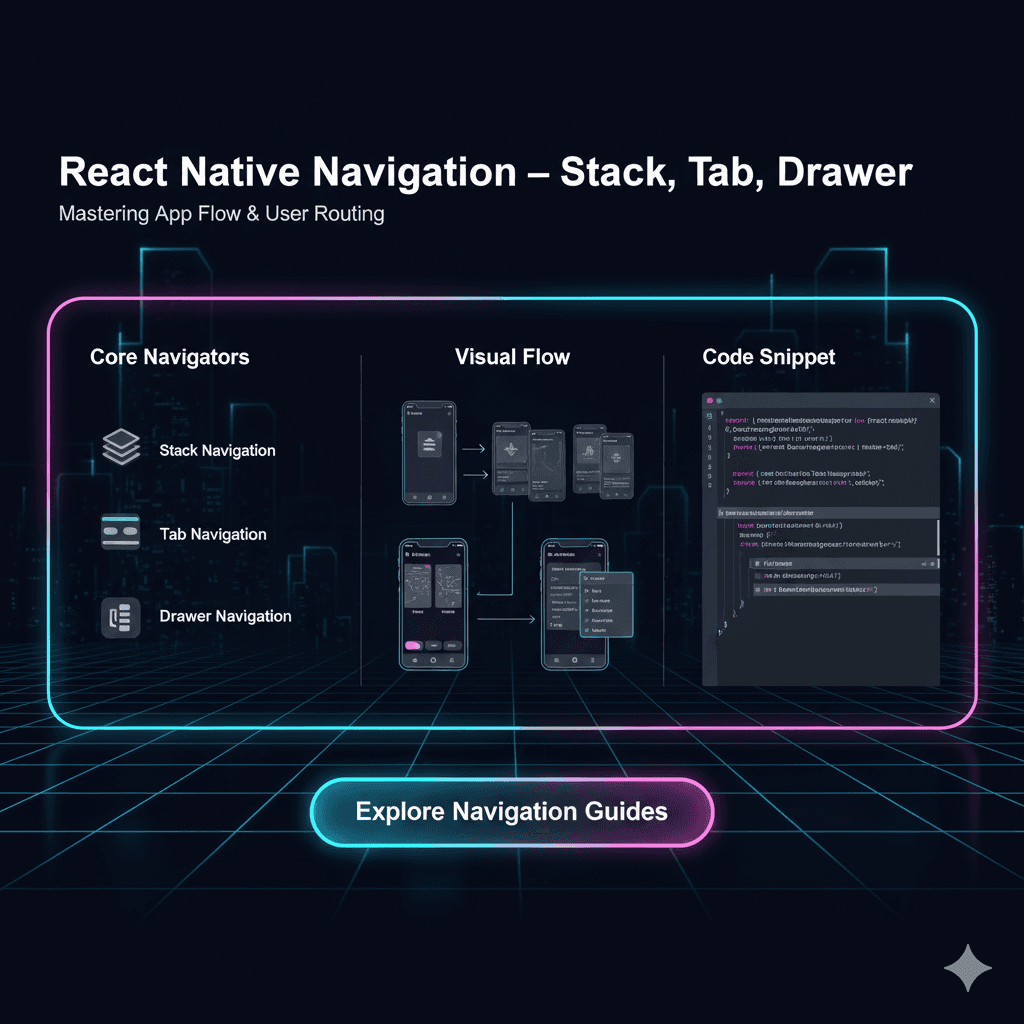Master React Native Testing: A Deep Dive into Jest & Detox

Tired of buggy React Native apps? Learn how to use Jest for Unit Testing and Detox for End-to-End testing. Build robust, high-quality mobile apps. Enroll in CoderCrafter's courses today!
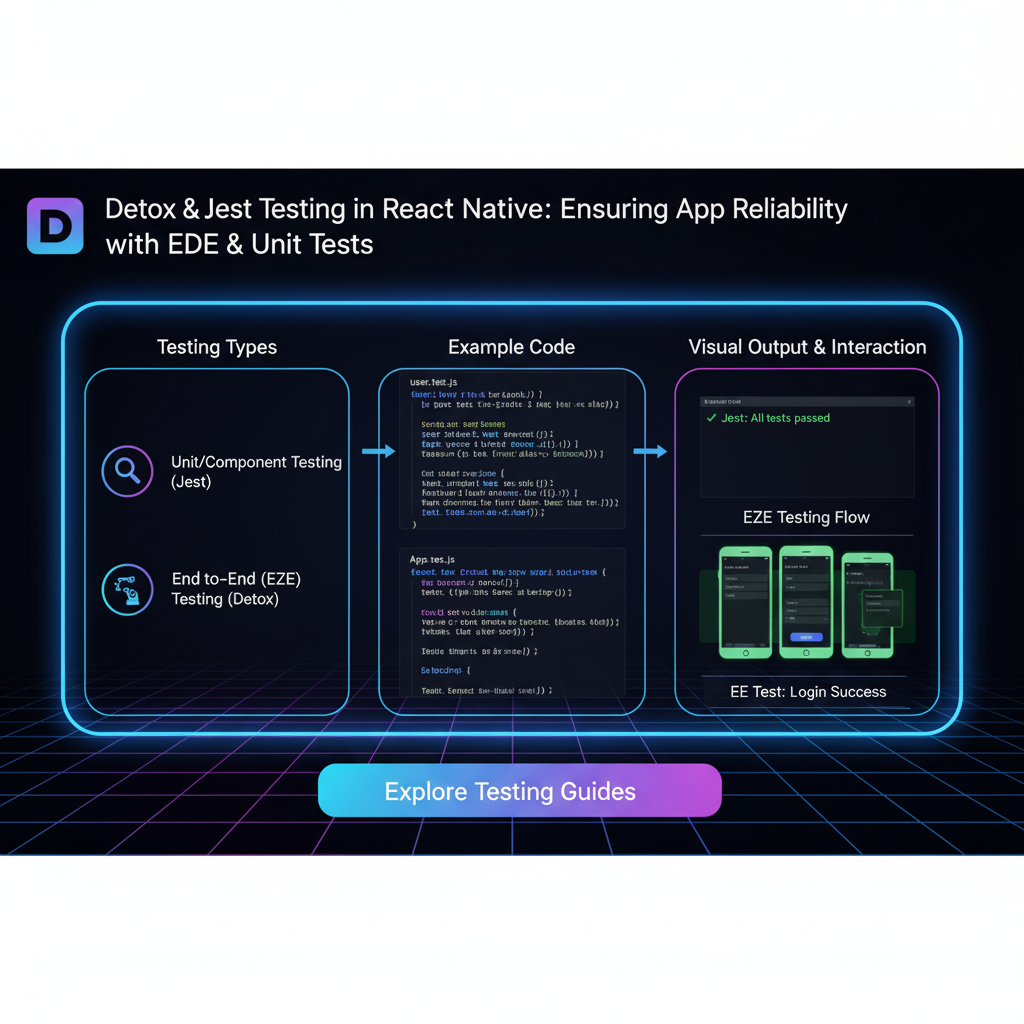
Master React Native Testing: A Deep Dive into Jest & Detox
Stop Buggy Apps! Your Ultimate Guide to React Native Testing with Jest & Detox
Let's be real. We've all been there. You've spent weeks crafting this beautiful, feature-packed React Native app. The UI is slick, the animations are buttery smooth, and you're ready to ship. You tap around one last time... and boom. The login screen freezes. A button does nothing. Your app crashes on a specific screen.
That sinking feeling? Yeah, we hate it too.
The difference between a side project and a professional, production-ready application often boils down to one thing: a solid testing strategy. And in the React Native world, that strategy is built on two powerhouse tools: Jest and Detox.
Think of it this way:
Jest is your code's personal proofreader, checking each function and component in isolation.
Detox is the ultimate beta tester, using your app just like a real user would, on a real device/simulator.
In this deep dive, we're not just going to tell you to "write tests." We're going to break down exactly how to do it, why it's a game-changer for your career, and how these two tools work together to give you unshakable confidence in your code.
The Dynamic Duo: Understanding Jest and Detox
Before we get our hands dirty with code, let's get our definitions straight. These aren't just fancy jargon; they serve very different, but complementary, purposes.
What is Jest? The Unit Testing Maestro
Jest is a delightful JavaScript testing framework with a focus on simplicity. It's the go-to choice for testing the logic of your application.
What it does: It runs your JavaScript code and verifies that individual units (like a single function, a module, or a React component in isolation) work as expected.
The Vibe: Fast, runs in a Node.js environment (not on a simulator), and is perfect for TDD (Test-Driven Development).
Good for Testing:
Helper functions (e.g., a function that formats a date).
Redux reducers and actions.
State logic in your components (using
React Testing Library).Conditional rendering of components.
The bottom line: Jest answers the question, "Does this piece of my code work correctly on its own?"
What is Detox? The End-to-End Testing Superhero
Detox is a gray-box testing library for mobile apps. The keyword here is "gray-box." It runs your entire application on a simulator or a real device and interacts with it like a human, but it has special access to synchronize with your app's state, making tests incredibly stable and fast.
What it does: It automates user flows from start to finish (e.g., sign up -> browse products -> add to cart -> checkout).
The Vibe: Slower than Jest, runs on a simulator/device, and mimics real-user behavior. It's what we call "End-to-End" (E2E) testing.
Good for Testing:
Critical user journeys (onboarding, login, purchase flow).
Navigation between screens.
Interactions with device APIs (like the camera or notifications).
The bottom line: Detox answers the question, "Does my entire app work together correctly from a user's perspective?"
Getting Our Hands Dirty: Code Examples
Enough theory. Let's look at some code. Imagine we're building a simple task manager app.
Jest in Action: Testing a Reducer
Let's say we have a reducer for our tasks.
javascript
// tasksReducer.js
const tasksReducer = (state = [], action) => {
switch (action.type) {
case 'ADD_TASK':
return [...state, { id: Date.now(), text: action.payload, completed: false }];
case 'TOGGLE_TASK':
return state.map(task =>
task.id === action.payload ? { ...task, completed: !task.completed } : task
);
default:
return state;
}
};Here's how we'd test it with Jest:
javascript
// tasksReducer.test.js
import tasksReducer from './tasksReducer';
describe('tasksReducer', () => {
it('should add a new task', () => {
const initialState = [];
const action = { type: 'ADD_TASK', payload: 'Learn Testing' };
const newState = tasksReducer(initialState, action);
expect(newState).toHaveLength(1);
expect(newState[0].text).toBe('Learn Testing');
expect(newState[0].completed).toBe(false);
});
it('should toggle a task', () => {
const initialState = [{ id: 1, text: 'Learn Testing', completed: false }];
const action = { type: 'TOGGLE_TASK', payload: 1 };
const newState = tasksReducer(initialState, action);
expect(newState[0].completed).toBe(true);
});
});See how clean that is? We're testing pure logic. Jest is lightning fast because it's not rendering any UI.
Detox in Action: Testing the User Flow
Now, let's test the actual flow of adding a task using Detox. First, you need to set up Detox (it's a bit more involved than Jest, so check their docs). Then, you write a test like this:
javascript
// e2e/taskFlow.test.js
describe('Task Flow', () => {
beforeAll(async () => {
await device.launchApp();
});
beforeEach(async () => {
await device.reloadReactNative();
});
it('should add a new task and then toggle it', async () => {
// 1. Find the text input, type a task, and press the "Add" button.
await element(by.id('taskInput')).typeText('Buy milk');
await element(by.id('addButton')).tap();
// 2. Expect the new task to be visible on the screen.
await expect(element(by.text('Buy milk'))).toBeVisible();
// 3. Tap the task to toggle its completion status.
await element(by.text('Buy milk')).tap();
// 4. Expect the task to have a strikethrough style (you'd check for a specific style or class).
// This is a simplified assertion. In reality, you might check for a custom prop or accessibility trait.
await expect(element(by.id('task-1'))).toHaveProp('completed', true);
});
});This test is a script of user actions. It's slower, but it gives you immense confidence that the UI, the logic, and the navigation are all working in harmony.
Real-World Use Cases: When to Use What?
You don't need to test everything with both. That's overkill. Here’s a practical breakdown:
Use Jest for:
Business Logic: Calculations, data transformations, filtering functions.
Component Logic: Does this
Buttoncomponent call theonPressprop when tapped? (Tested withreact-test-rendereror React Testing Library).State Management: Are your Redux/Zustand stores updating correctly?
API Service Functions: Mocking network requests to see if your functions handle success/error responses properly.
Use Detox for:
The "Happy Path": The most critical user journeys in your app (e.g., user registration, core feature usage).
Deep-Linking: Testing if a user opens a specific URL and lands on the correct screen.
Authentication Flow: The entire login/signup/logout process.
Complex UI Interactions: Flows that involve multiple screens and user inputs.
Best Practices You Can't Ignore
The Testing Pyramid: Follow this religiously. Have many fast Jest tests (unit), a smaller number of Jest integration tests, and a few, critical Detox E2E tests. This keeps your test suite fast and reliable.
Write Deterministic Tests: Your tests should produce the same result every time. Avoid using random data or relying on external APIs without mocking.
Use Descriptive Test Names:
it('should display an error message when password is less than 8 characters')is much better thanit('should handle password error').Test One Thing per Test: Keep your tests focused. If a test fails, you should know exactly what's broken.
Leverage Detox's Synchronization: This is Detox's killer feature. It automatically waits for your app to be "idle" before performing the next action, eliminating flakiness. Don't use
sleeporsetTimeout—let Detox handle the timing.Mock What You Must: In Jest, mock heavy dependencies like
AsyncStorageorfetch. In Detox, you might mock the backend API in more complex scenarios to ensure test isolation.
FAQs: Your Burning Questions, Answered
Q: Can I use Jest and Detox together?
A: Absolutely! They are not competitors; they are partners. You use Jest for your Detox tests. Detox provides the runner and device automation, while Jest (or Mocha) provides the test syntax and assertion library.
Q: Which one is more important?
A: For most projects, start with Jest. It's easier to set up, faster to run, and catches a huge percentage of bugs. Introduce Detox once you have critical user flows that need the highest level of confidence.
Q: Detox tests are so slow. Is this normal?
A: Yes, compared to Jest. E2E tests are inherently slower because they boot up a simulator and run the entire app. This is why you only write them for your most important flows.
Q: My Detox tests are flaky. What am I doing wrong?
A: Flakiness is the arch-nemesis of E2E testing. The #1 cause is not properly waiting for elements. Use Detox's waitFor method and ensure all your interactive elements have unique testID props for reliable selection.
Conclusion: Ship with Confidence
Mastering Jest and Detox is like upgrading from a bicycle to a bulletproof car for your development journey. Jest ensures every single part of your engine is humming perfectly, while Detox guarantees that the entire car will get you from point A to point B without breaking down.
It’s not just about preventing bugs; it’s about the freedom to refactor fearlessly, to onboard new developers smoothly, and to deploy on a Friday without sweating through the weekend. It’s a professional skill that separates hobbyists from senior engineers.
The initial setup and learning curve are an investment, but the payoff in saved debugging time, improved code quality, and personal sanity is immeasurable.
Ready to transform from a coder to a professional software crafter? This deep dive into testing is just the beginning. At CoderCrafter.in, we don't just teach syntax; we teach you how to build robust, scalable, and production-ready applications. To learn professional software development courses such as Python Programming, Full Stack Development, and the MERN Stack, visit and enroll today at codercrafter.in. Build your portfolio, master in-demand skills, and launch your tech career with confidence
